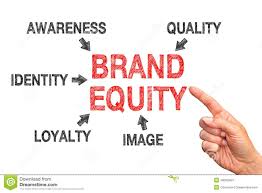What do big companies have in common? Why does everyone continually warn ‘beware of imitations’? What exactly does it mean to be a ‘brand’?
The answer to all of the above questions is simple. Nowadays, the brand is a crucial factor in a company’s success. This concept is confirmed by the current trend for large companies to adopt an innovative view of marketing that centers on a specific strongpoint called total brand management.
Thus, product quality becomes a necessity though no longer a sufficient requirement. It is clear that a product’s intrinsic quality remains the ‘sine qua non’ for consumer acceptance.
There are no marketing, merchandising or licensing strategies that can make up for a lack of product quality. Everything revolves around the fact that brand awareness can be the true determining sales factor in a market which is increasingly characterised by product homogeneity.
First of all, a brand communicates a set of associated values that constitute the brand equity. Although there is certainly nothing more intangible than a brand, apart from how it is represented in terms of design, a brand cannot work effectively without constant reference to firstly, a reality that is physically experienced by individuals and secondly to the range of products available and finally, what such products can offer.
Just because it does transmit values, a brand is a fundamental part of the social, economic and human context of its time reacting quickly to the symbolic and socio-cultural phenomena which redefine that same context.

Today’s markets are characterised by over-supply, intense competitiveness in every sector, increasingly aggressive competition and product and market strategies which are open to imitation. Consequently, the brand and the values have become the truly critical competitive factor.
In order to overcome the wall of indifference or defensiveness presented by prospective purchasers, each company needs to develop an integrated communication campaign which includes different communication methods along with high-impact approaches like advertising. Such methodologies include company promotional activity, merchandising, licensing and sponsorship.
Each of these communication tools play their own important role in building and defending brand equity. Product quality alone is an indispensable but insufficient condition.
From the start, products and services should be of high quality, technologically innovative and in a continual state of evolution in order to satisfy the ever changing needs of the consumer. But even this is no longer enough.
Research into the competition, the ease with which information can be accessed from around the world, continual monitoring of market trends as well as product analysis and disassembly techniques means virtually all products can immediately be reproduced, leaving a company’s market share vulnerable.
Consequently, product success is played out at other levels based on a set of conditions that ensure the desirability of – not exactly the product in itself – but rather, the offer, which includes both the brand and the product.
Brand equity is nothing else but these set of conditions that represent the added value inherent in any given company’s offer the real competitive edge.
This set of values, associated with the product by potential consumers, must be constructed in a way which is consistent with the brand’s market positioning.
Thus, such values must be shared by the brand’s target people and should highlight the privileged relationship established with the consumers.
Only by following such a policy, can a company gain sufficient competitive advantage over its rivals to allow it to steer clear of price competition.
Increasing and maintaining brand name awareness is clearly one way to strengthen a product’s brand equity. We can define brand name awareness as the ability of a potential purchaser to identify a brand in sufficient detail to be able to recommend.



